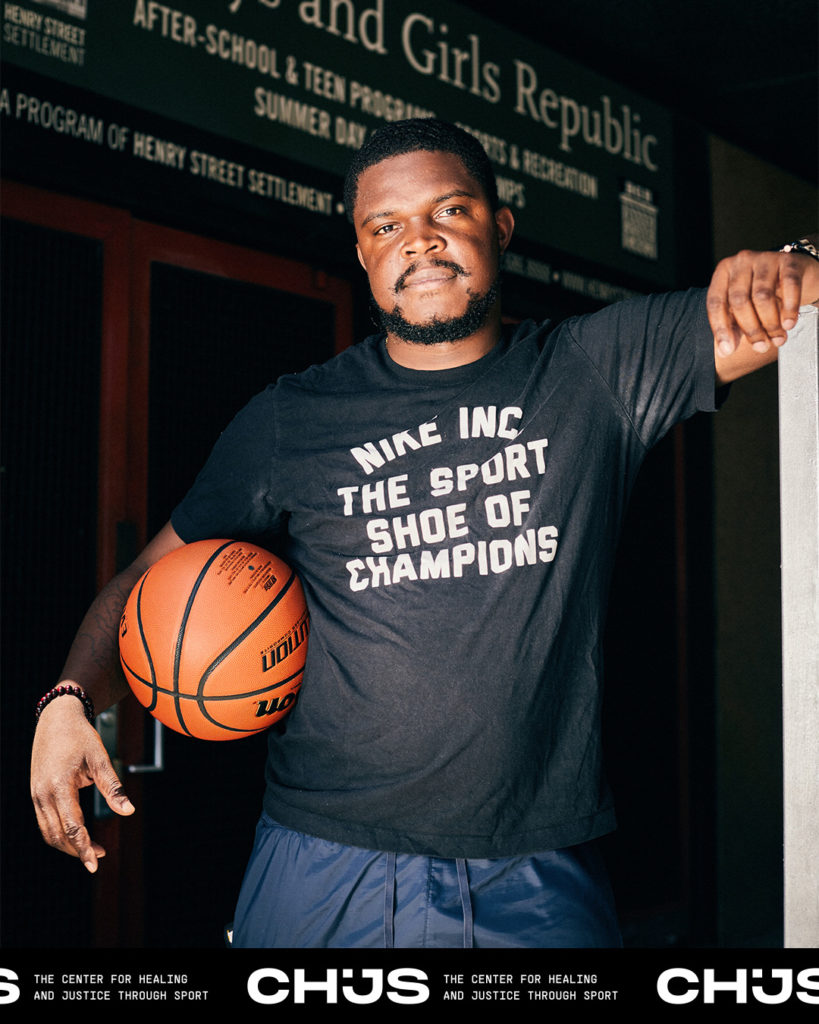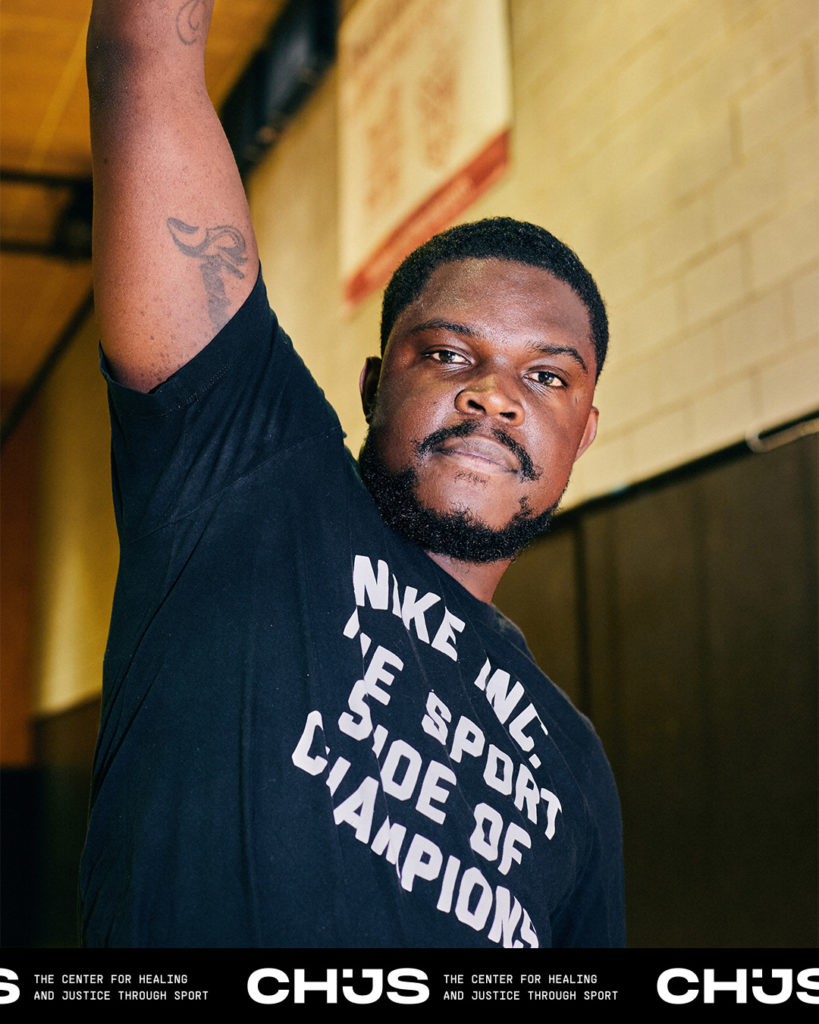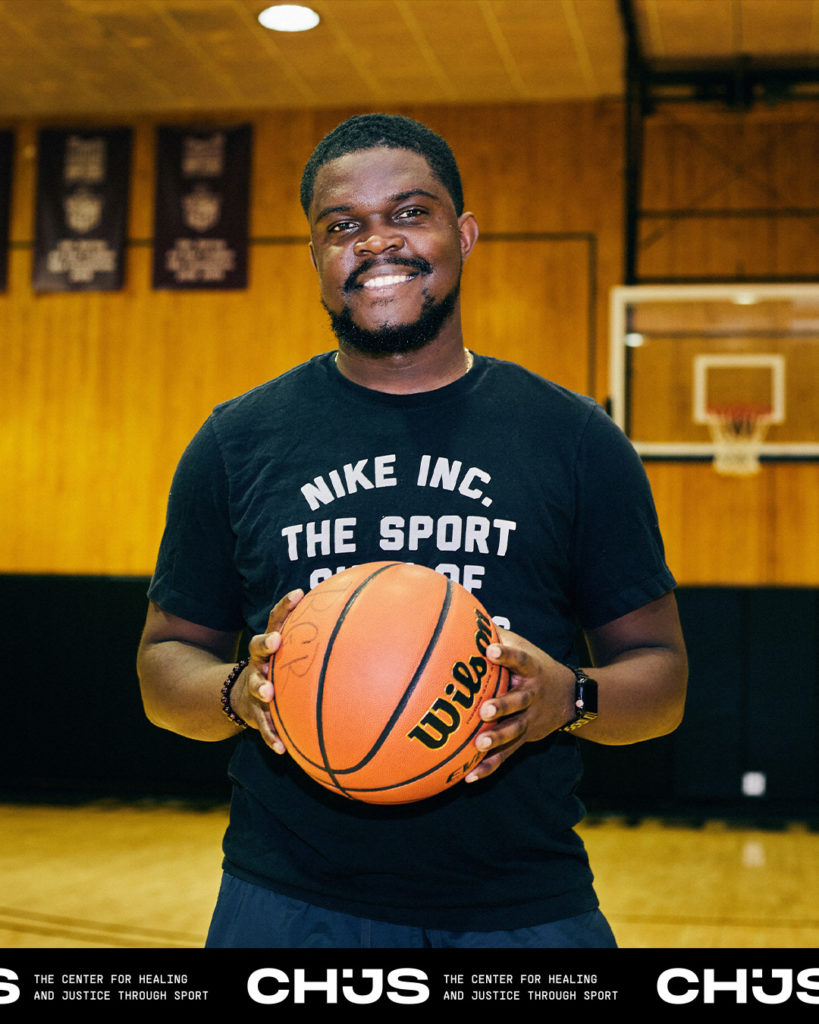On August 20th join us as we celebrate the end of our launch week and the hard work of leaders like Anthony with a live virtual event hosted by Megan Bartlett with Dr. Bruce Perry and Olympic athlete Ibithaj Muhammad to speak to the unique position sport and the power of play have on getting through the challenges ahead as we attempt to “get back to normal” after the last year of living through the adversity of the pandemic.
The first time Anthony Andino came to the Henry Street Settlement—where he serves as program coordinator today—was in 2004, after his family was displaced from their apartment building in Brooklyn due to a fire.
He’s been a part of the programming there, either as a participant or a staff member, ever since.
Henry Street Settlement is a not-for-profit social service agency that meets the pressing needs of New York City’s Lower East Side residents through programming like preschool, Meals on Wheels delivery, job-readiness training and mental health counseling.
Around the time he came to the Henry Street Settlement, Andino joined one of the organization’s basketball teams–Operation Athlete– and also played for a community center called BGR (Boys & Girls Republic), also operated by Henry Street Settlement throughout middle and high school.
“Basketball has always been that one thing for me,” Andino said. “I got into it in elementary school, I think, about 2nd grade and ever since I haven’t stopped. It’s kind of like what I would call my escape from the day-to-day monotony, when things don’t really go my way. That’s what basketball has been for me since I started playing.”
In his role as programs coordinator, Andino manages after school programs, and coaches in the center’s evening program with older youth, providing them a positive place to go, developing their basketball skills in the process.
He said one very influential coach in his life was former professional basketball player Glen Williams.
“I liked the way he approached the game from a sense of work ethic but at the same time, the way he treated us as players and the way he told us about how he treated his teammates, just like with respect and compassion and building that camaraderie with them. He also fostered an environment where we could build camaraderie with each other.”
That experience stands out in his memory, he said, because most of his basketball experiences as a youth seemed to be more concerned with what participants could offer the program and not enough with what the program could offer them, an experience he didn’t want to replicate with his athletes.
“In working with the youth that I work with, I try to give them as much voice and control in the processes that I can give,” Andino said. “I definitely try my best to ask them, what do you guys see? What do you guys want to do? Because at the end of the day, I have an idea, I know from my experience what I think will work, but I empower them to speak to what they want and have an arena to put that in motion and see what that looks like. I think that’s probably one of the best ways I can allow them to build those positive relationships and be safe in the program. You know, to take healthy risks.”
The changes he’s seen in his programs after learning about healing-centered coaching can’t be overstated, he said.
“The relationships I’ve built since the change, in my opinion, have been phenomenal,” Andino said. “I’ve had kids that have gone to college, and they attempt to credit success to what they learn and the environment they were put in here, and I definitely appreciate that, but at the same time I empower them to understand that their contributions made that environment what it was as well.”
Because this way of approaching sport is different for many practitioners, it sometimes takes a while to get coaches on board. But once they try it and see results, they too are completely bought in, Andino said.
“With most coaches who come into the program that don’t subscribe to my philosophy of coaching or the way that we coach as a program, they argue that you can’t win games coaching the way we coach because we’re ‘too soft’ on the kids,” Andino said, “and that couldn’t be less true.”
“If anything, I feel like my teams have won more than other teams in the community because of the way we coach and the level of commitment that our players have to the program because we’re committed to the kids as much as the program. So normally, when coaches argue productivity or their metric of success as wins, I tell them that I’ve met your metric of success at winning and I challenge you to meet my metric of trying to help build a relationship. I guarantee if you can build a somewhat significant relationship with as many kids on your team as possible, you will reach every goal that you have set out for yourself. They will play well for you and want to win because you coach well for them.”
To help his teams be successful on the court, Andino encourages individual players to maximize their strengths, or as he says, be a “star in their role,” even if it’s not the most visible role on the team.
“I learned that from a coach, because we had teammates who weren’t happy with their contribution to the game,” Andino said. “Some people were like, ‘I want to score more,’ and he was like, ‘I understand you want to score more but there are so many other ways you can impact the game that I know you can do better than others. I may not ask you to score as many points as I ask someone else but I need you to rebound better than anyone else, or I need you to be the best passer on the floor, or the best defender on the floor. If you do those things, we still win and you contribute to our overall success by being a star in your role.’”
For Andino, being a star in his role means leaving places and cultures better than he found them. Something he feels he’s done since first stepping foot at Henry Street Settlement as a 14-year-old, to now.
“I think that’s a big part of why my kids respect me,” Andino said, “because I don’t do it for the spotlight. I do it because I care and that’s a big part of being an everyday legend, doing it because this is what you want to do.”



